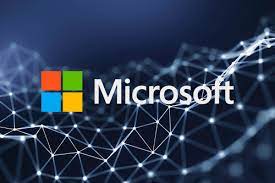Microsoft is envisioning a future for its Windows operating system where computers possess enhanced capabilities and intelligent automation, fundamentally changing how users interact with technology. Dubbed the "Windows 2030 Vision," this initiative aims to create a more intuitive, efficient, and secure computing experience, with artificial intelligence (AI) at its core.
A Shift in Interaction Paradigms
A key aspect of Microsoft's vision is a move away from traditional input methods like the mouse and keyboard. David Weston, Microsoft's Corporate Vice President of Enterprise & Security, suggests that by 2030, these methods will feel as antiquated as MS-DOS does to younger generations. Instead, the company anticipates a "multimodal" interaction, where computers can see, hear, and understand natural language, enabling users to communicate with their devices in a more natural way.
This shift is driven by the development of "agentic AI," which can act on behalf of the user, managing workflows and automating tasks. Rather than manually clicking through menus and applications, users will be able to simply ask their computer to complete tasks, using voice commands or other intuitive inputs.
AI-Powered Capabilities
The integration of AI into Windows 2030 is expected to bring a range of new capabilities:
- Contextual Awareness: Computers will be able to understand user intent from environmental cues, such as background noise, ongoing conversations, and even emotional tones.
- Predictive Assistance: The OS will learn and anticipate user preferences, providing context-aware recommendations and proactively managing notifications and system settings.
- Intelligent Automation: AI will handle repetitive administrative tasks, schedule meetings, manage security routines, and summarize communications, freeing users to focus on more creative and strategic work.
- Enhanced Security: AI-powered security agents will monitor systems, identify threats, and respond to incidents, providing a more proactive and intuitive security system.
Implications and Challenges
Microsoft's vision has the potential to transform various aspects of computing:
- Accessibility: Multimodal interfaces can make technology more accessible to users of varying abilities and backgrounds.
- Efficiency: Intelligent automation can streamline workflows and eliminate digital drudgery, boosting productivity.
- Innovation: Context-aware applications can adapt in real-time to a user's situation, opening up new possibilities for software development.
However, realizing this vision also presents significant challenges:
- Technical Complexity: Integrating robust, privacy-preserving, and contextually aware AI into the daily experience of billions of users is a daunting task.
- Ethical Considerations: Ensuring that AI systems are fair, transparent, and accountable is crucial to avoid unintended consequences.
- User Acceptance: Overcoming user resistance to new interaction paradigms and ensuring a smooth transition is essential for widespread adoption.
Steps Toward the Future
Microsoft is already taking steps to bring its Windows 2030 Vision to life. The company is testing AI-driven features like "Companions" for the Windows 11 taskbar. It is also integrating Copilot, its AI assistant, more deeply into Windows and other applications. Moreover, Microsoft is working on improving voice command capabilities and incorporating sensory input through cameras and microphones. Microsoft has also launched a public Windows roadmap to provide more transparency about upcoming features and updates.
While the complete realization of the Windows 2030 Vision may still be years away, the direction is clear: Microsoft is committed to creating a future where computers are more intelligent, intuitive, and integrated into our lives.

















